I started working on a shohin Japanese maple about a year and a half ago. Here’s what it looked like at the end of 2016.
Shohin Japanese maple
The first order of business was repotting. I found the tree didn’t have a lot of roots so I was expecting it to grow slowly. And as the new shoots emerged, I pinched them to further keep growth in check.
Despite these efforts, the tree grew strongly.
May, 2017
Fortunately, there are several techniques for slowing growth on Japanese maples. I first removed every other leaf on the tree, and then a month later, I cut every leaf in half, leaving just a quarter of the foliage the tree had produced in spring.
The tree held on to those half-leaves through the end of the year and as this year’s buds began to elongate I pinched again. The tree was even more vigorous this year!
Japanese maple – April, 2018
In an effort to reduce the tree’s vigor, I figured I’d try defoliating it. I thought about partially defoliating the tree by preserving the smaller, interior leaves, but most of the leaves were equally strong. And whereas partial defoliation is a good technique for balancing interior and exterior growth, completely defoliating the tree can be good for stimulating new buds. As the silhouette of the tree is getting large in relation to the trunk, I became curious about how the tree would respond to full defoliation.
The process is simple – I cut off every leaf with sharp scissors, leaving just a small section of the petioles that supported each leaf.
Two pairs of new leaves
After removing the leaves
As I worked, I noticed that one of the leaves had yellowed.
Japanese maple leaf with some yellowing
Upon turning the leaf over, I discovered the culprits.
Aphids!
Aphids commonly appear on maples in early spring but typically move along once the leaves fully mature.
Here’s what the tree looked like after removing the leaves.
After removing the leaves
Finding that some of the shoots had extended beyond the desired silhouette of the tree, I performed a little cutback.
After minor cutback
I’d like to reduce a few of the larger branches, but will wait until summer or fall – or possibly next year – to give the tree a chance to produce as many new shoots as possible. I’m figuring that greater density will lead to shorter internodes.
In the meantime, I’ll be watering carefully to make sure the tree doesn’t stay too wet as transpiration dramatically slows down for trees with no leaves.
Subscribe to Bonsai Tonight
New Posts Delivered Every Tuesday and Friday

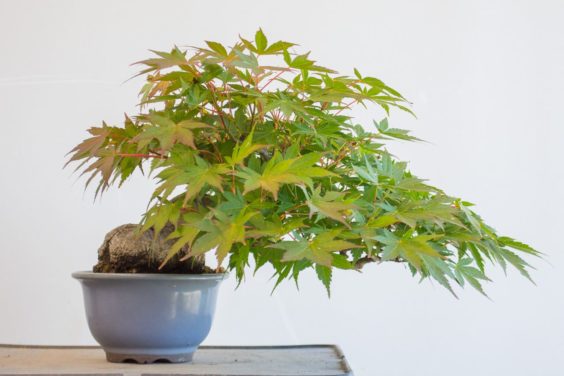
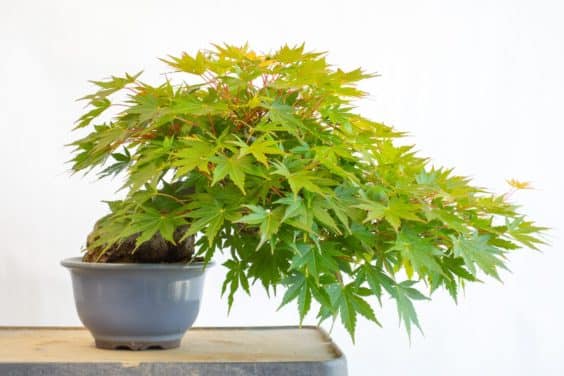
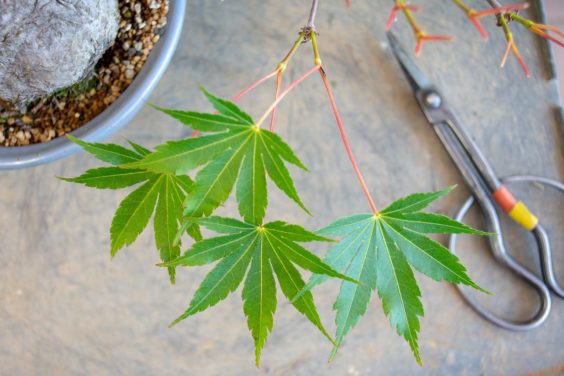
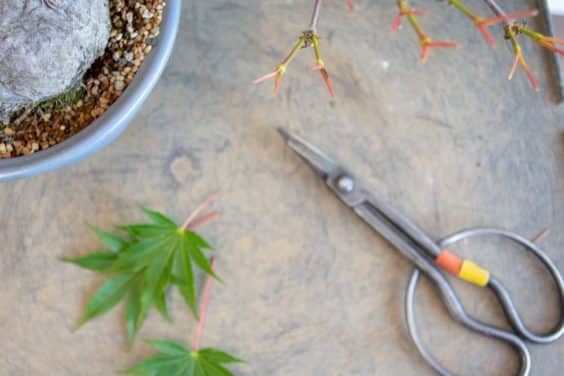
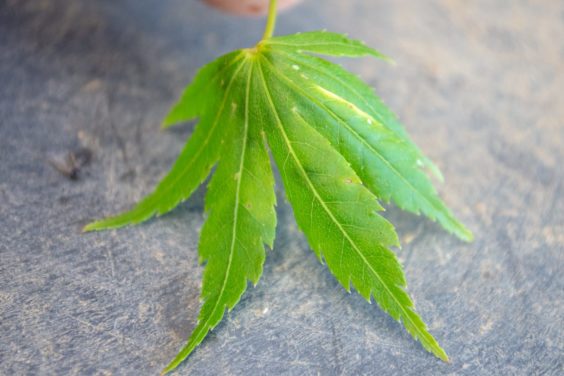
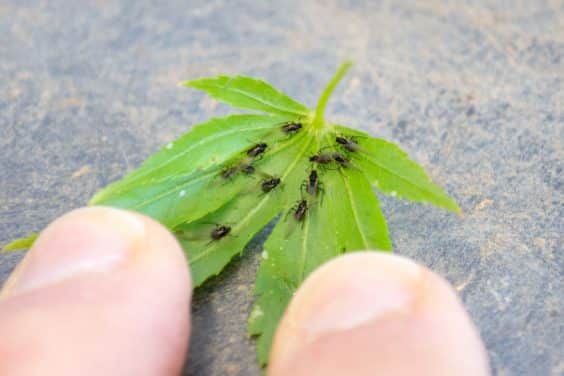
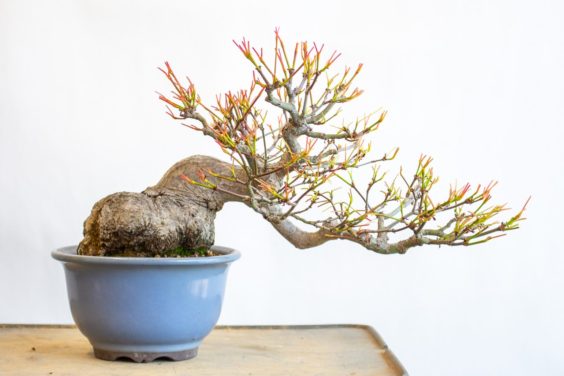
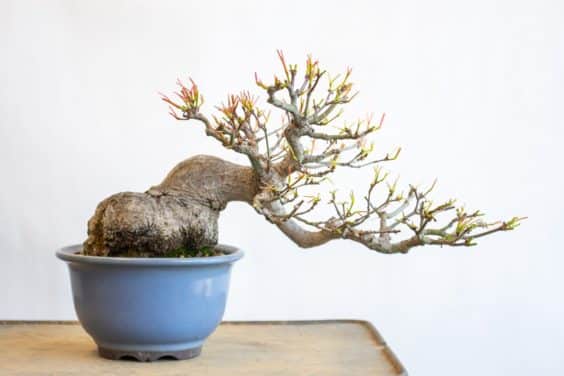
Alessandro says
Ciao Jonas! I got a maple shohin too, and I was thinking about a defoliation because of to much big leaves!😊 Please do a follow up when new leaves will shown!
Thanks, Alessandro